As an avid metal detectorist, I’m used to digging up old antique tools, hardware, and even the anvils that made them.
Finding a piece of history underground is easy enough with the right equipment.
But identifying your new treasure is where the extra legwork comes into play.
Old axe heads come in all shapes and sizes, materials, and markings, making their identification like a scene from a National Treasure movie.
Sometimes you don’t have the energy or desire for all that. I get it.
So I’ve put together a guide on recognizing the types of antique axe heads to make your life a little easier.
And if you want to understand what the markings etched into your axed head mean, check out the cheat sheet at the end.
Axe Head Identification

Maybe you just dug up a small treasure in your backyard, and your first thought is to hit the Google machine to figure out what it is.
If you’re trying to date an axe head and determine its value, it usually takes more work for antique relics than recently buried metals.
While the number of axe head styles is more limited these days, there was a time when you’d have hundreds of types to cross off your list.
Now, I’m not going to have you waste hours searching through all the options. Instead, how about we focus on the most prevalent axe head styles you’re likely to come across?
And after we get through those 26(!) styles, I’ve got a cheat sheet on some popular axe head brands and how to identify their markings.
So I’ll stop blabbering on and get to it.
Adze Axe Head Identification
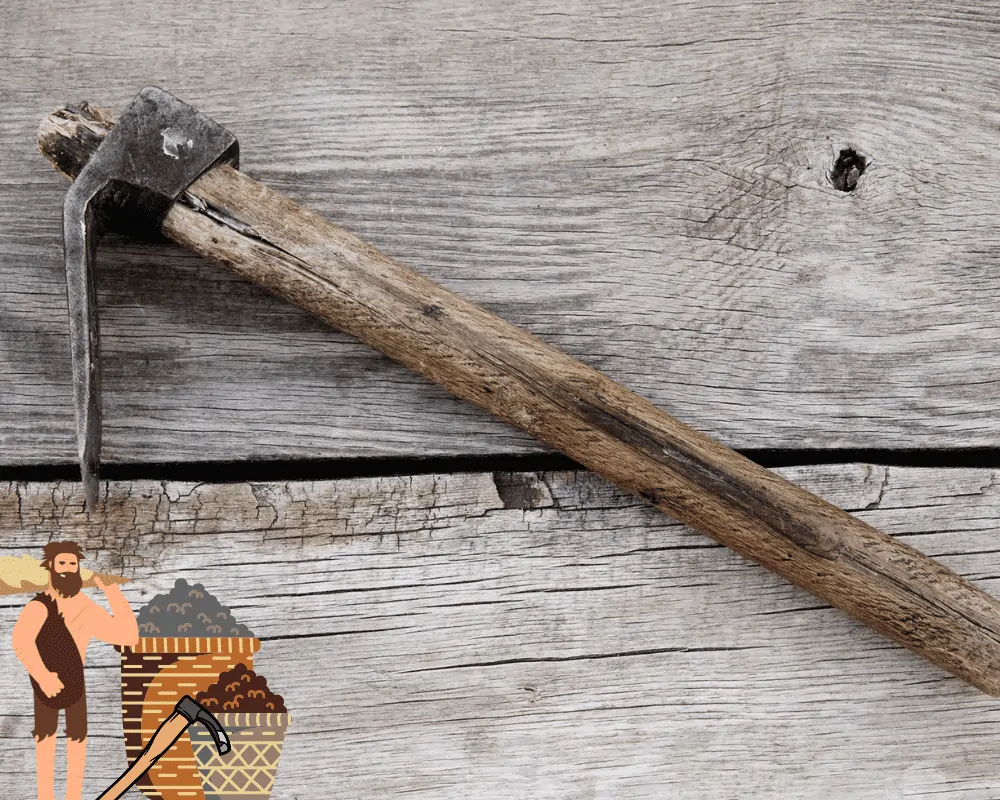
An adze axe head is easily identifiable because of the horizontally curved blade used for scooping and cutting.
This old axe head has been around since the stone age and still provides plenty of value.
While you might traditionally think of an axe head having a vertical edge for cutting, the adze is shaped perfectly for carving out pieces of wood or using it as a garden tool.
It’s similar to a hoe in both look and use.
No matter if it’s made of stone, iron, or bronze, the design of this axe head is unmistakable.
Bardiche Axe Head Identification

If you dig up a bardiche axe head, I promise you won’t confuse it for a gardening tool.
A bardiche axe is strictly made for battle.
The blade of a bardiche axe head is long, sharp, and significantly more narrow than a felling axe.
Their shape could appear more uniform at both ends or present as being concave, with a top pointed edge sloping to the bottom half.
Another identifier could be the sign of a point of connection to the pole on the lower tip of the axe head where it would have been secured.
They were used as weapons in Europe, dating back to the 14th century.
Bardiche axe heads can vary in size, but generally, you’d find them being over two feet in length.
Their narrow design made for easier use on the battlefield.
Battle Axe Head Identification
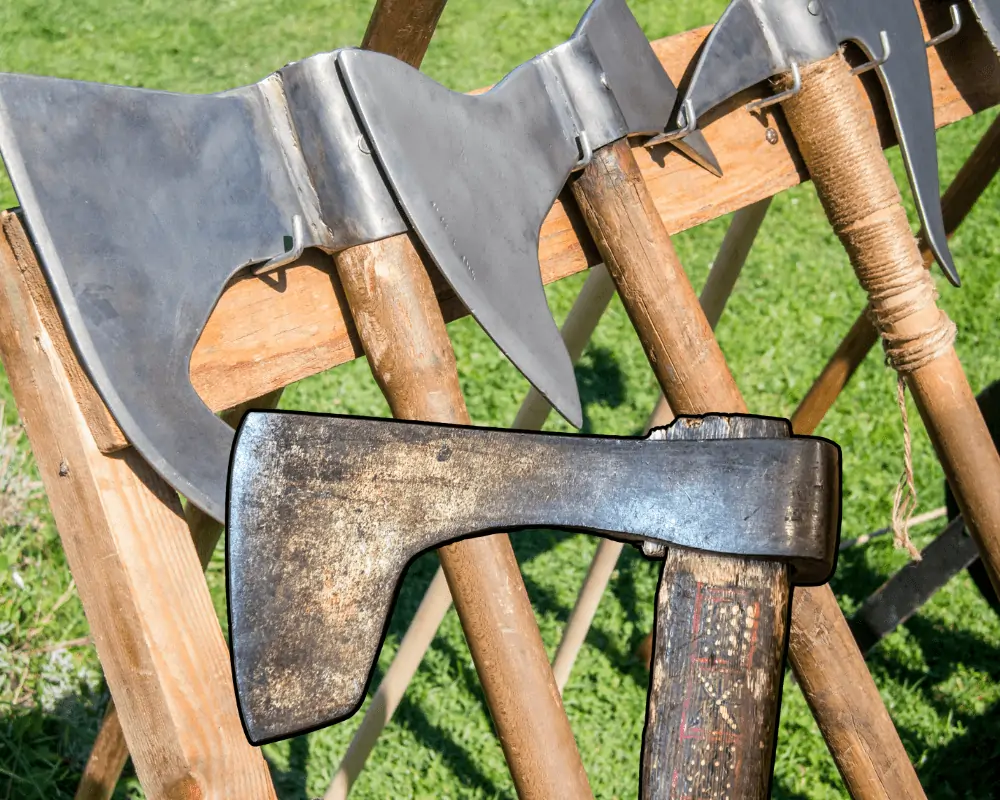
A battle axe was mainly used as a weapon but could also double as a ceremonial piece.
A battle axe head is recognizable by the broad beard at the base of the blade. The beard is the flare in which the axe head’s edge curves and ends at a sharp point, leaving space between the blade and the handle.
Some were adorned with unique engravings for use on special occasions or served as added intimidation.
Carpenter Axe Head Identification
A carpenter axe is used for woodworking to shape, split, and cut wood.
One identifiable feature is the size.
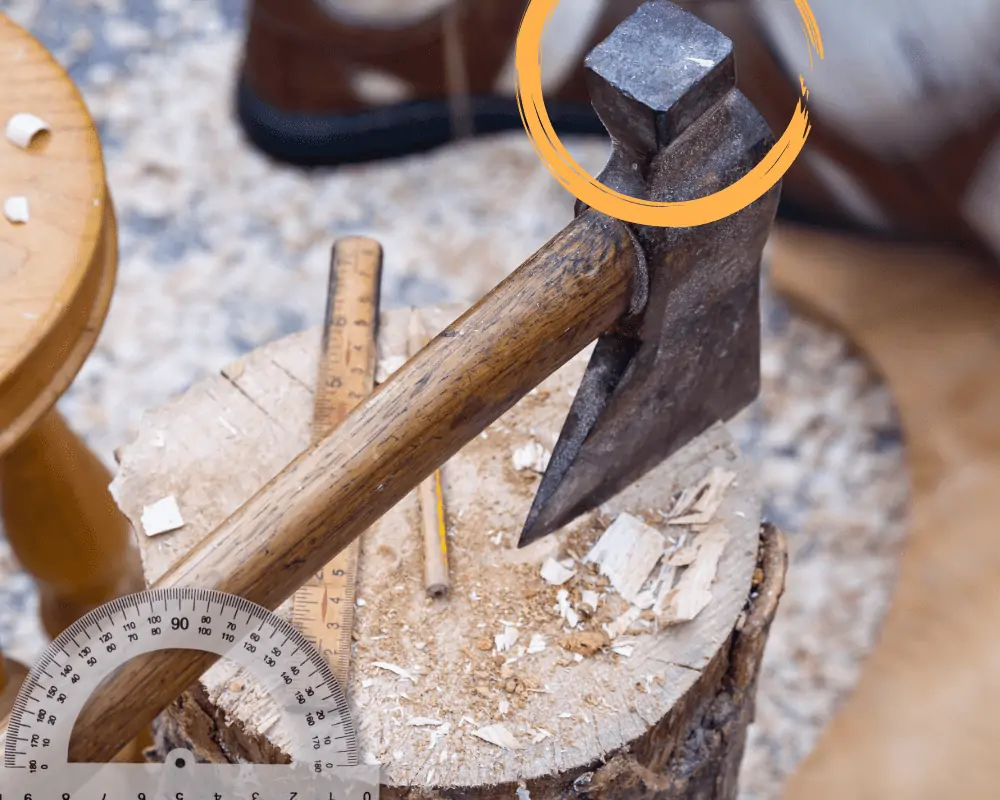
A carpenter’s axe head is slightly larger than a hatchet and is used for precision work, not felling trees.
They have distinct beards, so you can easily grip and maneuver the blade. You’ll also notice the sharp edge isn’t curved. It’s straight and thin, while the poll or butt of the axe head is wider to allow for hammering.
Crash Axe Head Identification
I can’t say I’ve seen one of these in person, but crash axes are a pilot’s ace up the sleeve.
Think of a crash axe head like a tomahawk on steroids.

They’re usually smaller but have the shape of the letter ‘P.’
You can identify a crash axe head by the pointed tip on the back end and a curved edge falling from the front, almost flat head until it connects back to the belly.
These blades are made of rugged steel and come with a serrated edge or sharp bit for cutting through aircraft in an emergency.
Dagger Axe Head Identification
Dagger axes were commonly used as weapons in ancient China, where they were favored for their versatility and maneuverability.
But it isn’t uncommon to see them in depictions of ancient Chinese ceremonies.

The shape of a dagger axe head can vary depending on the weapon’s specific design and intended use.
However, many dagger axe heads have a distinctive shape similar to a scythe.
The blade is typically lengthy and narrow, curving horizontally with a sharp point at the end designed swinging. It may be adorned with decorative features such as engravings or inlaid jade.
Dayton Axe Head Identification
A Dayton axe is what you might think of as a typical modern-day axe.

The Dayton axe head will stand out for its simplicity. Usually made of forged steel, the blade is long and has a slight curve.
They’re larger, so they can sufficiently cut down trees.
There isn’t much more to it. Dayton’s are hard to confuse for other types of axe heads.
Double Bit Axe Head Identification
I’d be surprised if you couldn’t identify a double-bit axe head.
A double-bit axe is a type of axe that has two blades on opposite sides of the handle.
The head of a double-bit axe is typically broader and heavier than the head of a single-bit axe.

You can identify a double-bit axe head by the two sharp, curved blades at the opposite ends, each with a distinct beard.
You can also spot a double-bit axe head by eye size.
The eye is the hole in the axe head that the handle runs through and secures to the blade.
With a double-bit axe head, the hole or eye on the top and bottom are the same size and elliptical in form.
A single-bit axe head is generally smaller on the bottom as it doesn’t need to support as much weight.
Executioners Axe Head Identification
An executioner’s axe was mainly used in the middle ages when someone’s head was in danger of sudden removal.
Thankfully, we’ve advanced as a society, and they’re considered neat relics and not functional tools of capital punishment.
So how do you know if you’ve found one?
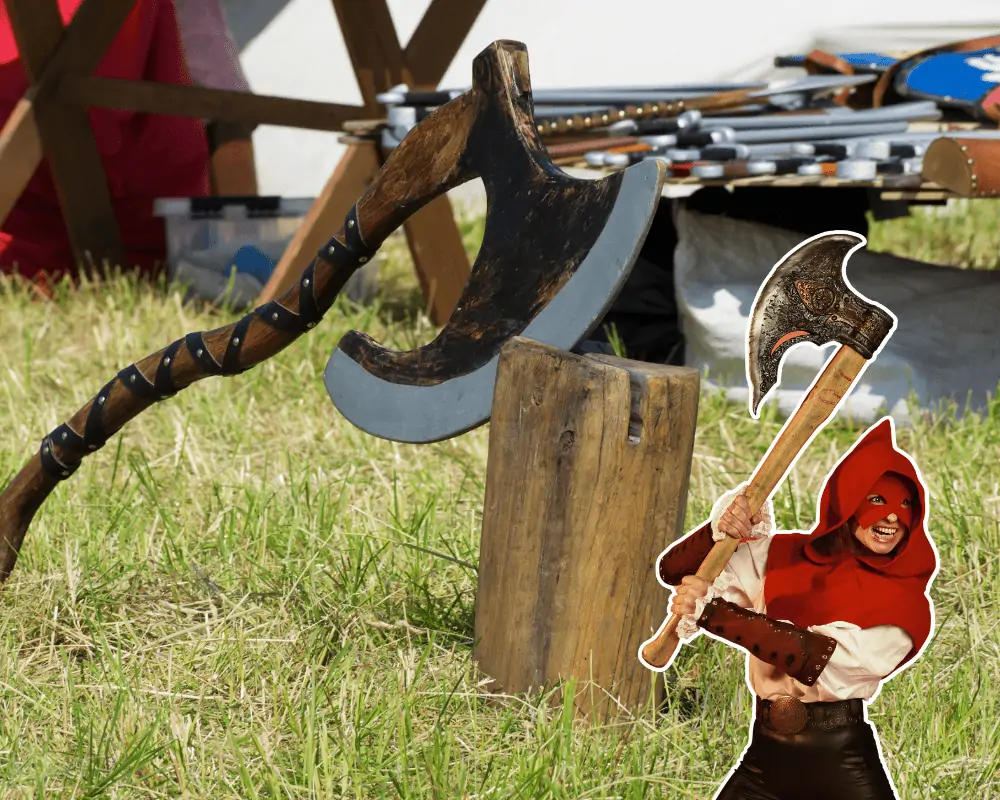
The head of an executioner’s axe is typically large and heavy, with a sharp, curved blade.
Not all executioner axe heads are built the same.
Most are single-bit, but there are some double-bit versions.
Generally, you can identify an executioner axe head by the shape of the blade. Its lengthy curve reminds you of a half-moon.
Sometimes the blade portion is the flat end, and other times it’s not.
When its blade is rounded, an exaggerated beard allows for a clean cut without the handle getting in the way.
Felling Axe Head Identification
I know I said that a Dayton axe head is the ‘traditional’ axe, and that’s correct.
Dayton is actually a felling axe.
But depending on where you find your old felling axe, it could look slightly different than a Dayton.
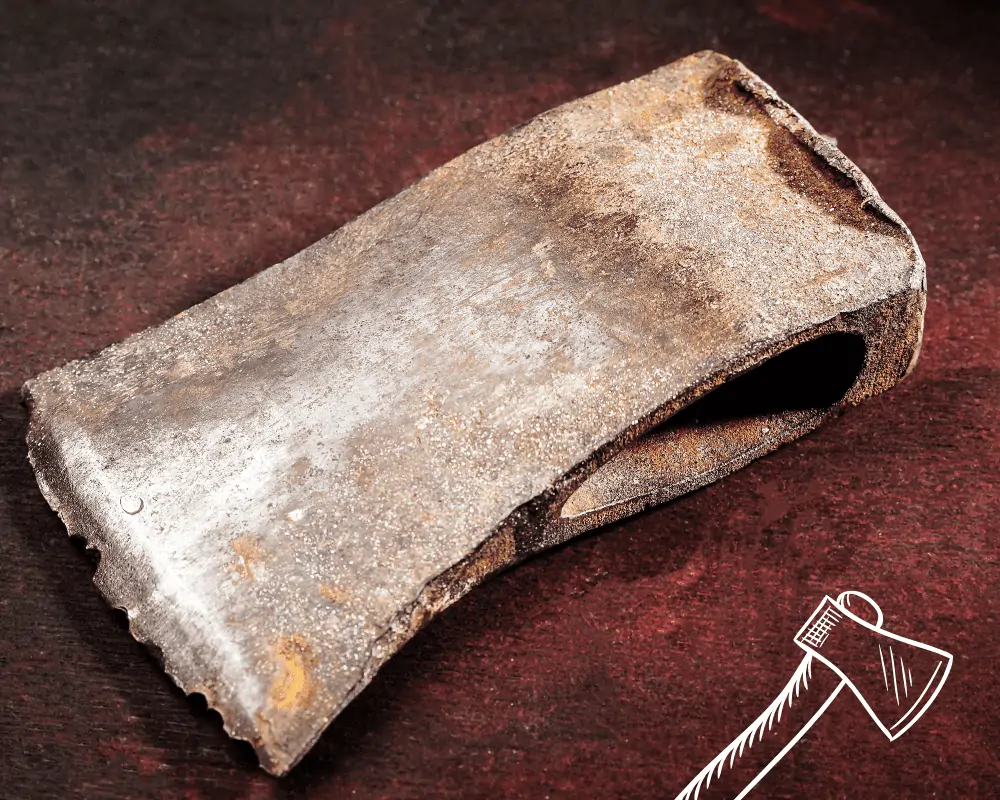
Before the American felling axe took over, the European version was lighter but longer.
Older felling axe heads were made with a lone piece of iron prone to damage with heavier use.
They also had wider blades, making them an ideal alternative for impromptu battles.
When colonizing what was to be the United States, the felling axe heads changed out of necessity.
More weight was added to the poll for durability. And a shorter edge was used to make felling trees easier.
Fireman Axe Head Identification
The Fireman axe head, also known as a Pulaski axe or cutter mattock, is a multipurpose tool used by forest rangers and firefighters.
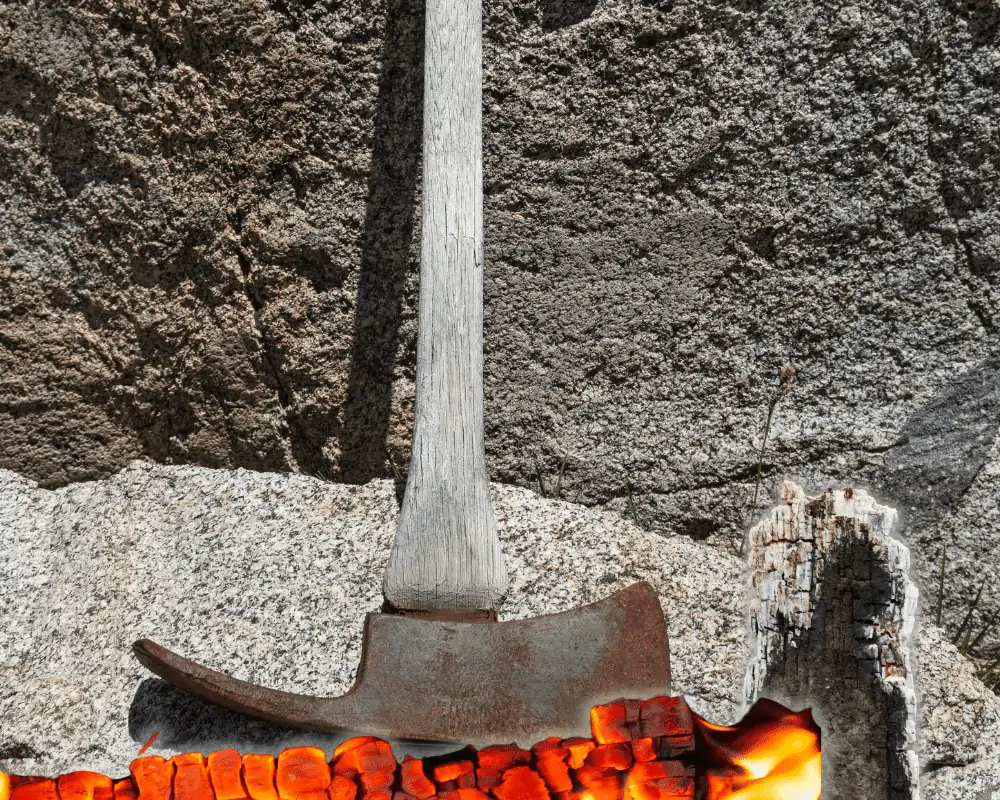
Whether chopping their way through wood and debris or making a protective trench in the soil, pulaski axe heads are a firefighter’s best friend. Besides water, of course.
You can identify an old fireman axe head because it resembles two other axes we already discussed, the Dayton axe and the adze.
It has a sharp, curved edge on one side and an adze blade typically 5 inches long on the other.
Remember, an adze edge is horizontal. So you shouldn’t confuse it with a different style easily.
However, newer models of the Pulaski axe replaced the adze with a long pick.
Another typical identifier is that the eye is generally oval in shape and uniform on both the top and bottom.
Forest Axe Head Identification
Used for limbing trees and cutting across the grain of the wood, forest axe heads can resemble a felling axe except for some subtle differences.
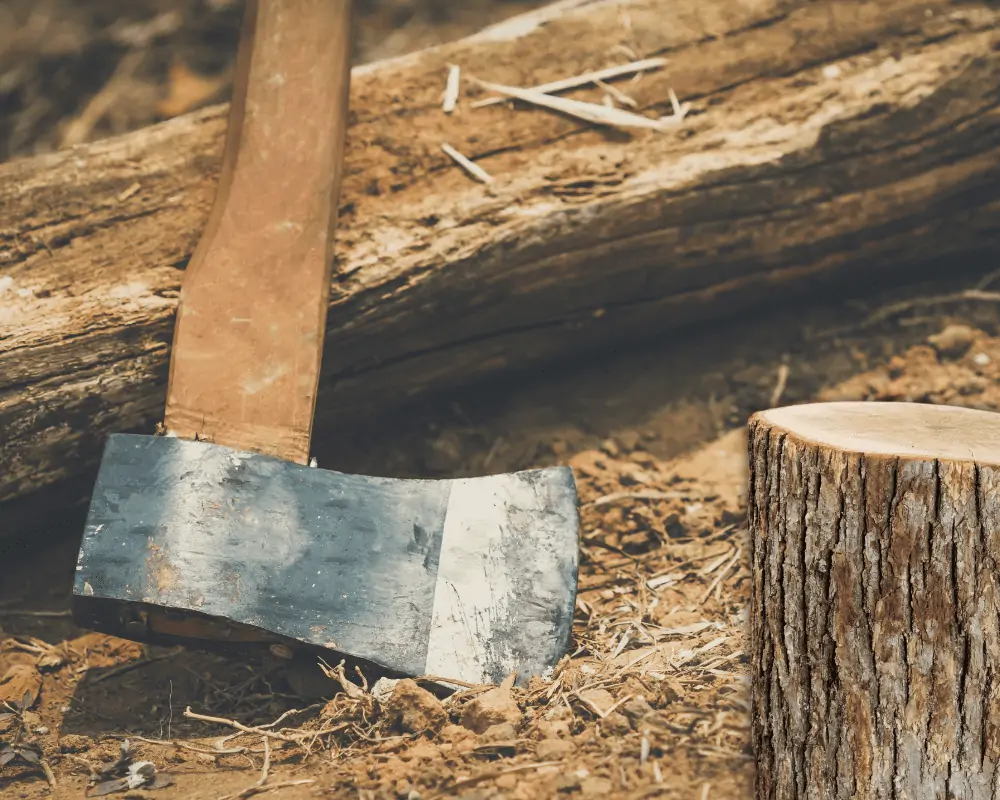
While both axe heads have a cutting, slightly curved bit, the head of a forest axe is relatively flat compared to a felling axe.
Also, the forest axe head is smaller and lighter than you’d find on a felling axe.
Because of this, you aren’t meant to use the poll as a hammering tool.
You’d look towards a carpenter or felling axe for more blunt work.
Halberd Axe Head Identification
This type of axe head is a medieval weapon that is no longer used, thankfully.

The halberd axe head has a long, curved blade with a sharp point on top and a hook or spike on the rear side of the head.
While the single bit may present as a standard, subtle arc, an inverted or concaved design, or a flat edge, there’s no mistaking the axe head’s additional weaponry on the top and back.
If you found one of these bad boys, congrats, and be careful!
Hatchet Axe Head Identification
A hatchet axe head is compact and serves as a weapon or tool, depending on the need.
They’re very similar to tomahawks in size as both are lightweight and small for easier carrying and maneuverability.
But don’t think they can’t be dangerous.
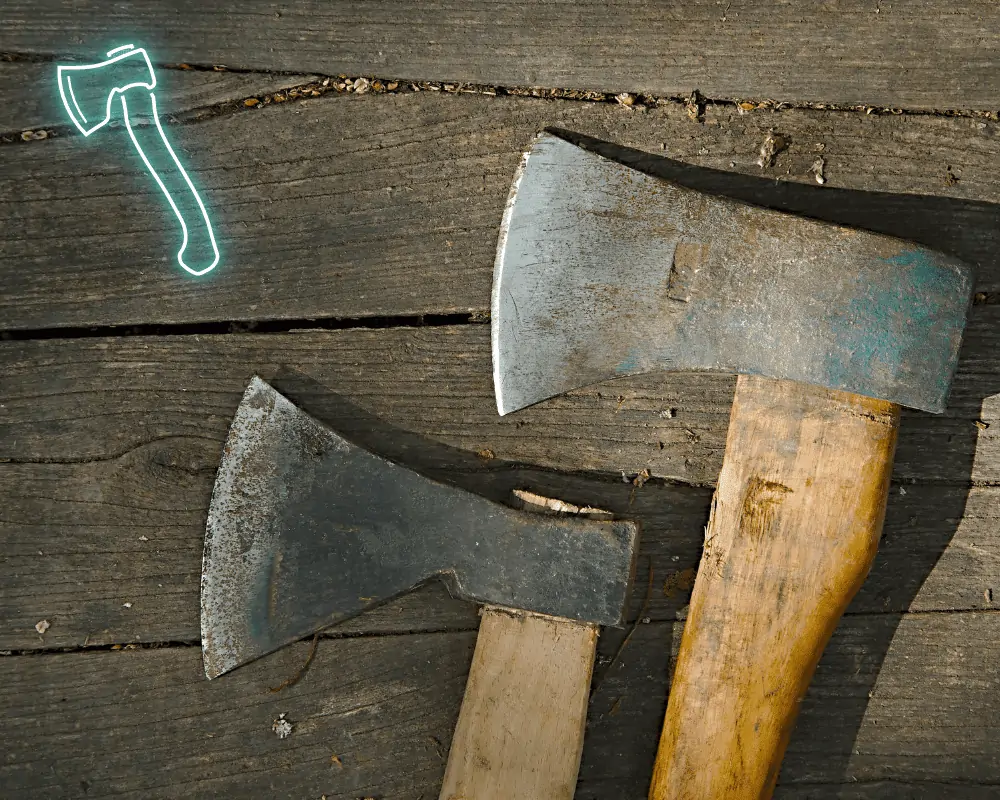
Hatchets have a sharpened bit, either wide and arcing or short and almost straight.
Most of the time, their polls are flat like a hammer. But not always.
You see, hatchets have been used since the dawn of man. So depending on where you found yours, there will be differences.
Colonial hatchets will not perfectly match up to one found in Viking history.
Hewing Axe Head Identification
A Hewing axe, also known as a broad axe, is used to shape wood into beams and other shapes for construction.
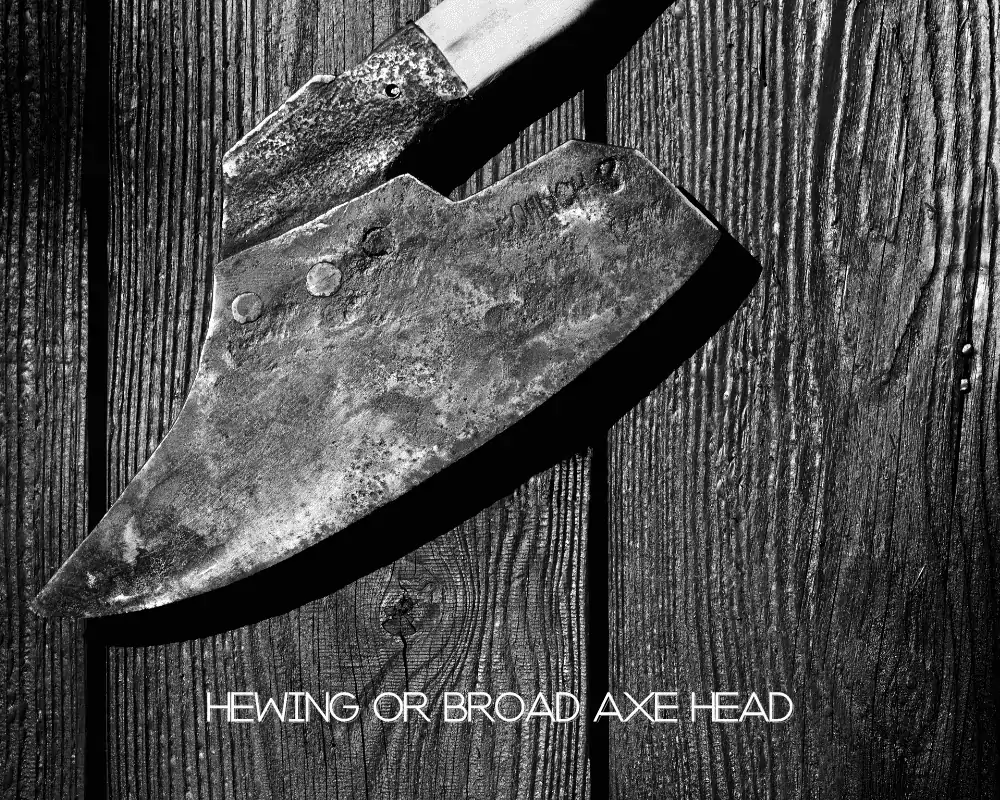
It has a broad, sharp blade with either a single bevel or a double bevel and is typically swung like a mallet to remove wood from the surface of a log.
The overall shape of a broad or hewing axe is elongated and flat, with a wide blade and a straight edge.
Try and picture an old folding hand fan. The shape is usually similar.
The hewing axe head is often larger and heavier than some other axes and is regularly used by professional carpenters and woodworkers.
Hudson Bay Axe Head Identification
A Hudson Bay axe got its name from the Hudson Bay Trading Company. They were famous for trading their axes with Native Americans in exchange for fur.
Hudson Bay axe heads are identified by distinct attributes like the teardrop eye, square poll, and linear top, from poll to toe.
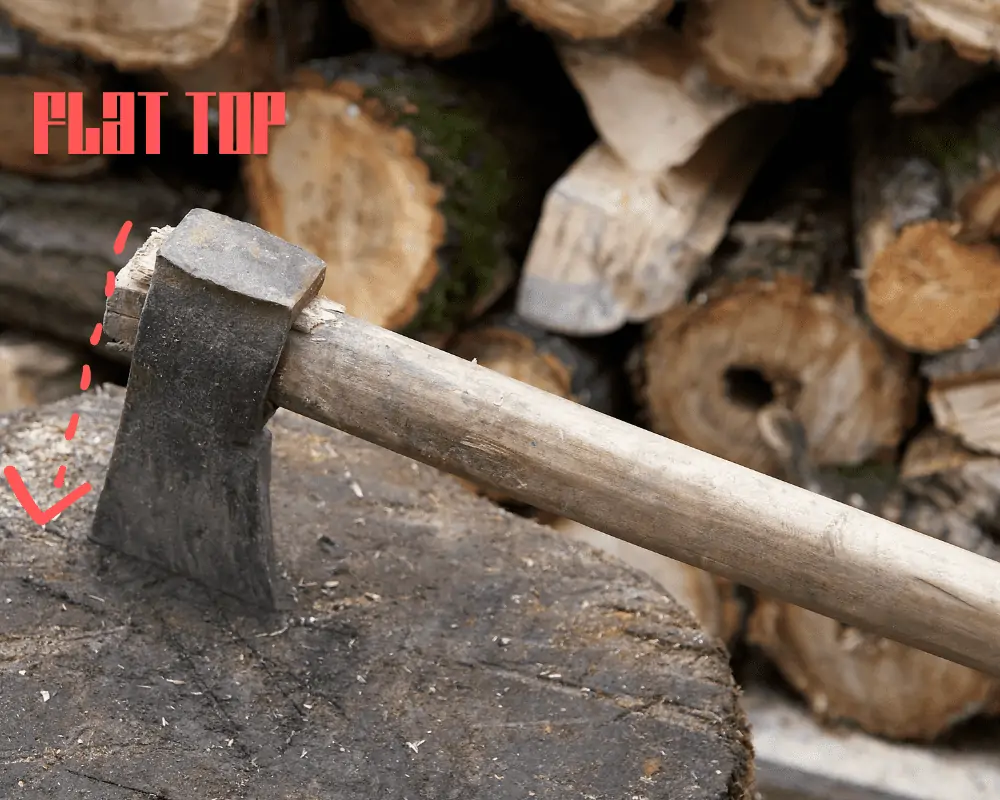
Previously, traders’ axes were poorly secured and had no poll around the handle. It was just a thin sheet of metal holding it together.
The modification on a square poll added a desirable tool functionality that the local hunters admired.
Additionally, these axe heads were slightly larger than traditional hatchets and more durable in a wilderness setting.
It’s why the Hudson Bay axe style is still used today. Campers and mountaineers wouldn’t be caught dead without this trusty tool.
Ice Axe Head Identification
An ice axe is precisely what you think it is. Made in the mid-1800s, mountain climbers used an ice axe for navigating the cold wilderness.
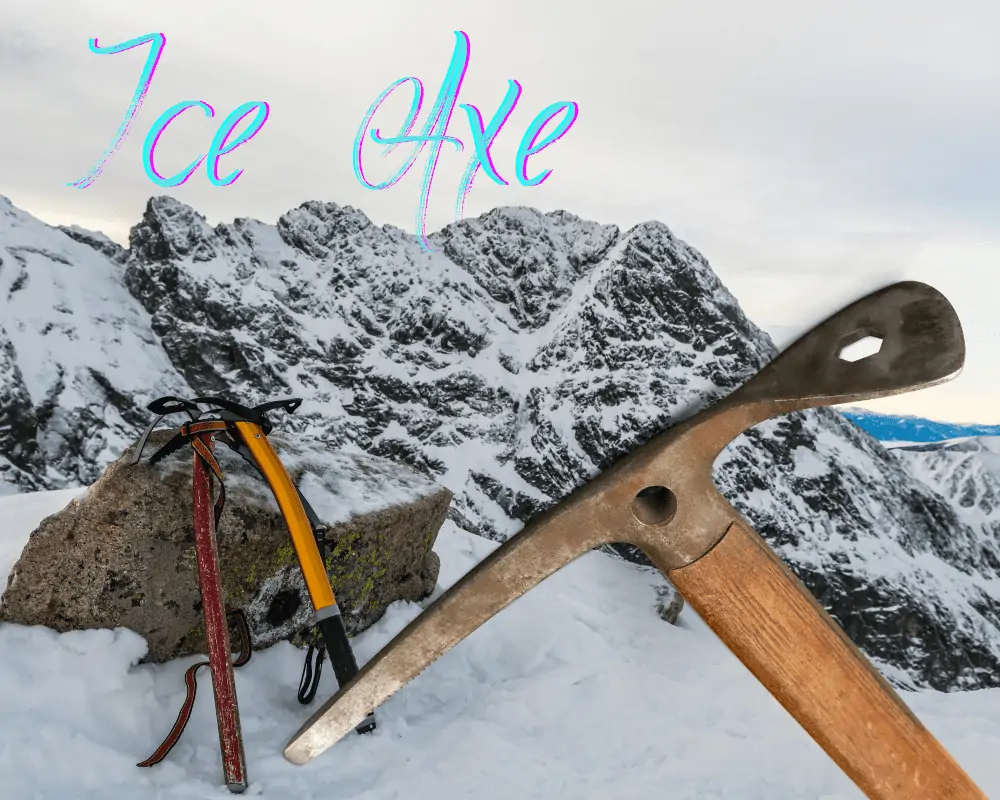
Unlike traditional adze design, the first ice axe heads had an adze that laid vertically on the back end. The front portion of the head was a standard pick for piercing ice and snow.
Eventually, the direction changed to the commonly found horizontal adze.
If you’re lucky enough to find an old antique ice axe, you’ll notice the pick is most likely twice as long as the adze.
Sometime in the 21st century, the length was modified to be equal on each end.
Mattock Axe Head Identification
A mattock or grub axe head is like the adze, except it also includes a vertical axe blade on the other end.

Or you could think of it like a pick axe but with a hoe on one side of the head.
You’ll also be able to determine the type of axe head by the wide circular eye and the extra weight, as they can be as heavy as seven pounds.
There isn’t much more to it than that. If you’ve found one, you should quickly be able to identify it.
Miners Axe Head Identification
A miner’s axe originated back in the middle ages and was once used for mining in enclosed spaces. Or for decoration during ancient ceremonies.
When you think of a miner’s axe head, you might imagine a pick axe, and you wouldn’t necessarily be wrong.
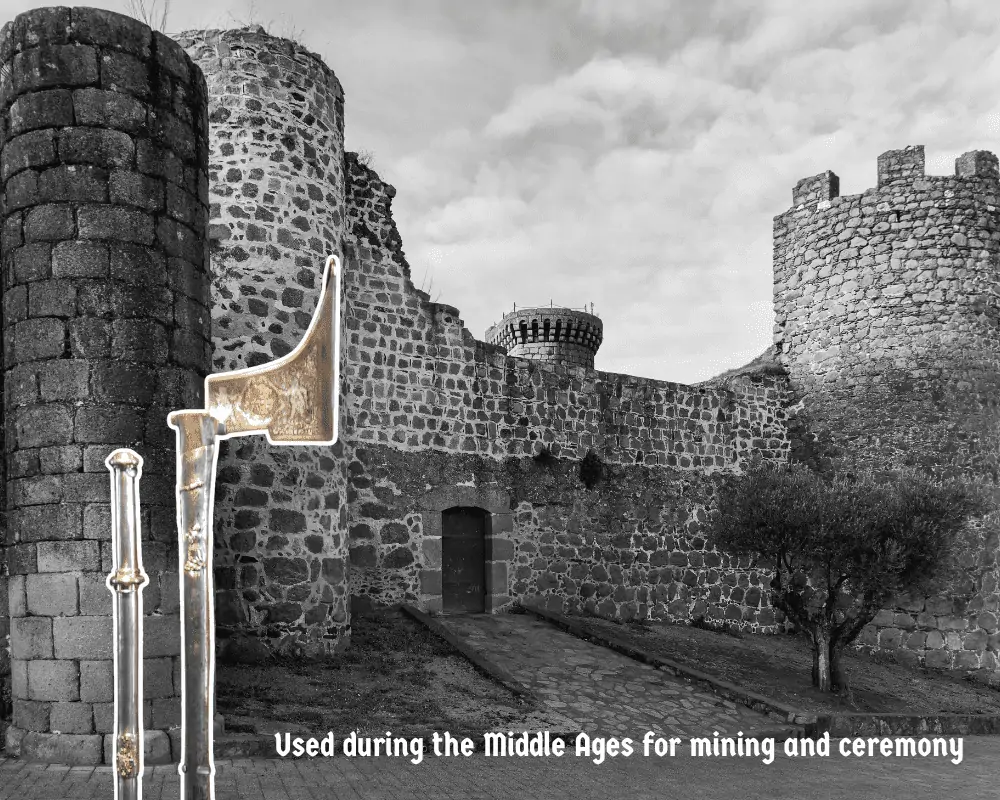
But old or antique miners’ axe heads looked more like a felling axe. Some had flat, lengthy blades close to a foot long. And others, although less common, had a slight edge with a flat poll.
If your miner’s axe head is genuinely that old, I wouldn’t be surprised if you also find decorative engravings on the cheek.
Mortise Axe Head Identification
Mortising axe heads were used as a woodworking tool as far back as the 1700s, usually to notch joints.
The holes or mortise in the wood that held together framework pieces like a joint were created using a mortising axe.
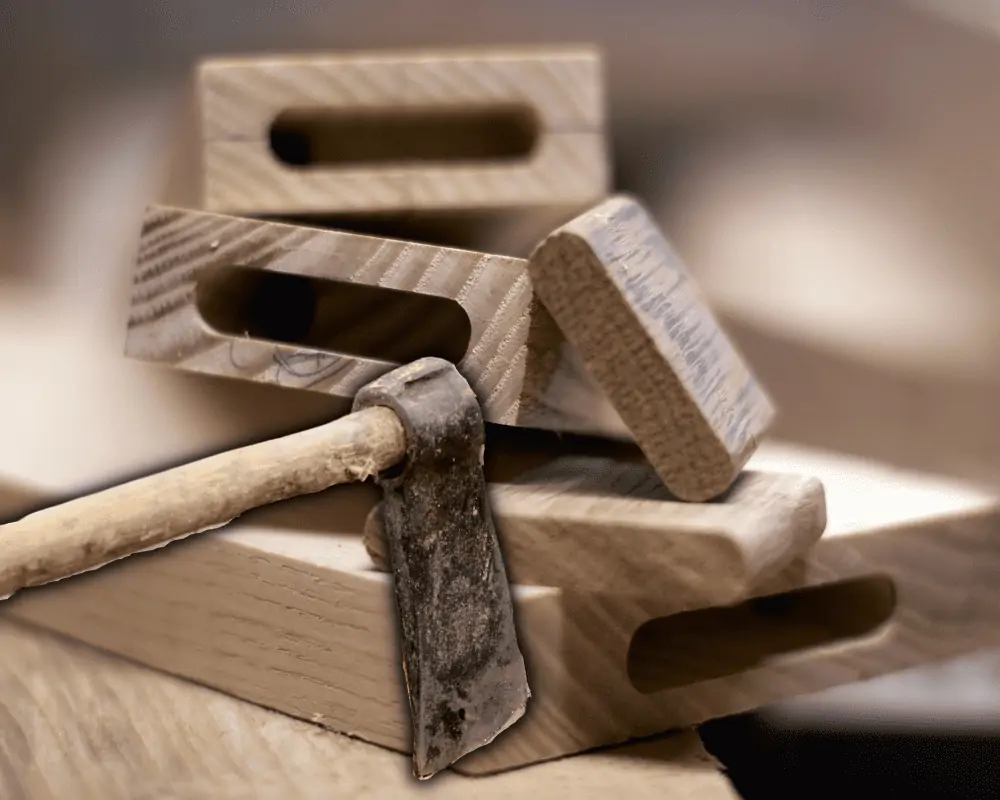
A woodworker would rest the edge of the axe head against the wood and swing a mallet against the poll to chisel the notch.
Blacksmiths could shape the mortise axe head to whatever design was needed. But usually, the bit was long and narrow, and the poll was flat with plenty of iron to support the force of a mallet.
Pick Axe Head Identification
This one’s easy, right?
Yes and no.
A pick axe head (also pickax or pickaxe) is like a little brother to the mattock or grub axe head, and the two can often be confused.
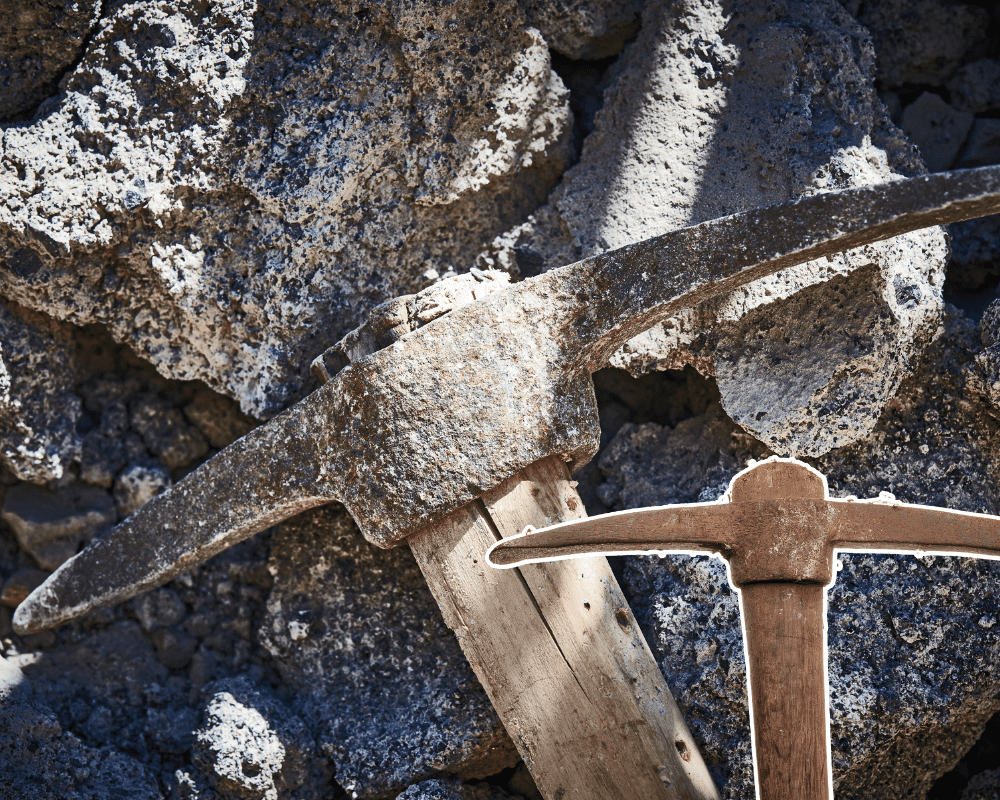
The critical difference in spotting a proper pick axe head is identifying the pick on one side and the long, narrow chisel on the other.
Whereas on the mattock, you have an adze and vertical blade.
Seems pretty easy to tell the difference, right? Well, to the untrained eye, you could chalk the two up as the same.
Also, be aware that a pick axe head will sometimes have two sharp spikes instead of one.
Pistol Axe Head Identification
Trust me, there’s no way you’re guessing what this kind of axe is.

A pistol axe or axe-pistol is the odd combination of an axe head fastened to an old pistol.
I’ve seen variations with broader bits at the end of a rifle and others with a flared edge that offers a flintlock pistol a dangerous advantage.
Don’t be surprised if you find one with an added pick for close-quarter battle efficiency.
Shepherds Axe Head Identification
Shepherd’s axes are really interesting! I have yet to find one myself, but I hope to one day.
They look more like a walking stick than anything else.
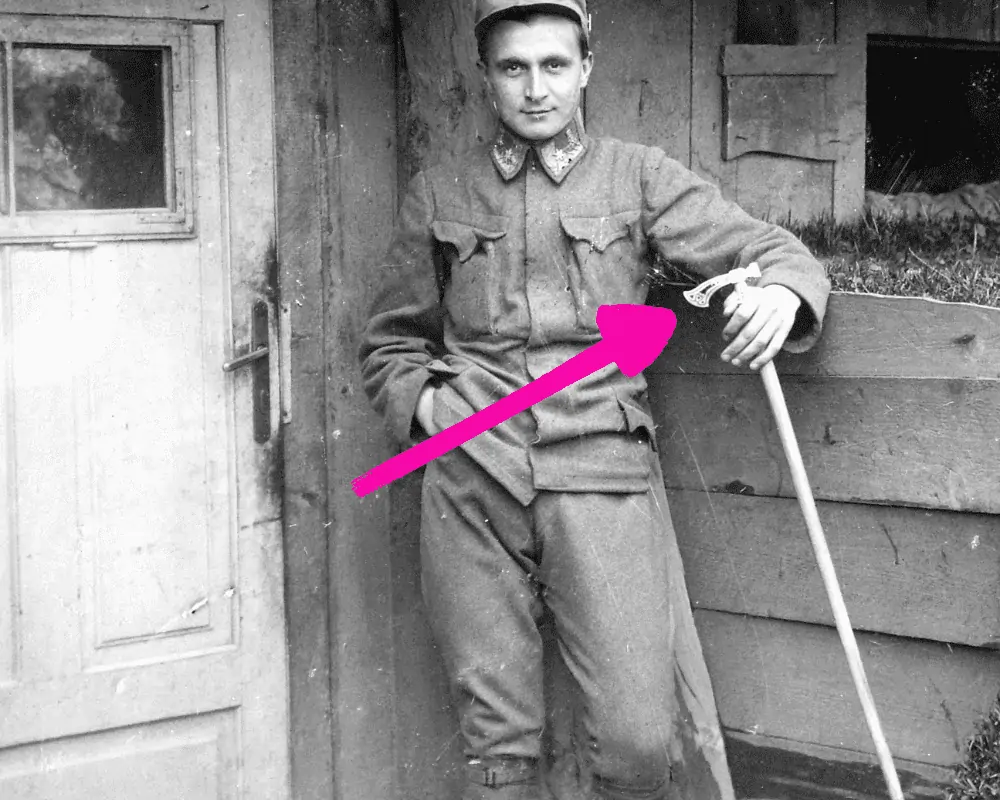
The shepherd’s axe head was small enough to fit comfortably in your hand but double as a light weapon or tool.
The metal bit used as a handpiece was tiny but sharp. And the poll side was usually flat for hammering and other services.
Most of the time, a shepherd’s axe head was well decorated as they were less of a brute instrument and more of an accessory.
Splitting Maul Axe Head Identification
If you have to identify an antique splitting maul axe head, look no further than the prominent round cheeks that seem to bubble like a balloon from the inside.
While the metal convex widened, the poll was straight and blocky like a mallet.
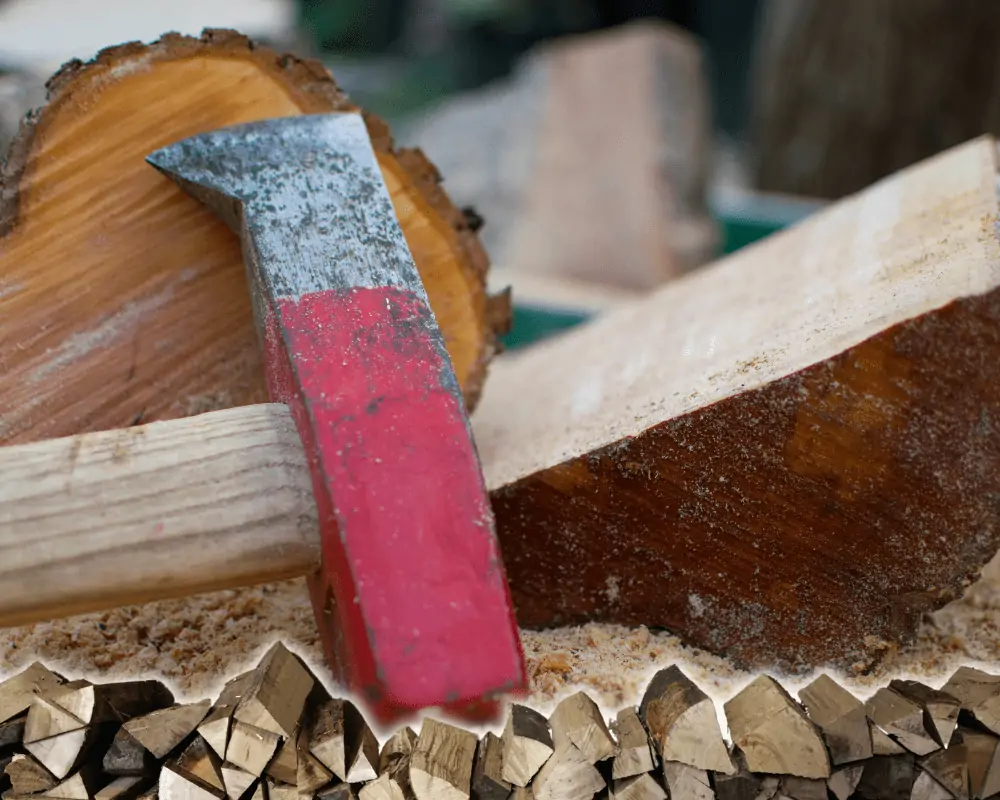
These old axe heads are wedge-like because they force the wood to split more effortlessly than a slimmer felling axe would allow.
Tomahawk Axe Head Identification
A tomahawk is like a hatchet with a little more flare to it.
Tomahawk or throwing axe heads have a short bit, only a few inches in length. Their polls can be shaped as flat or rounded surfaces or even spikes.
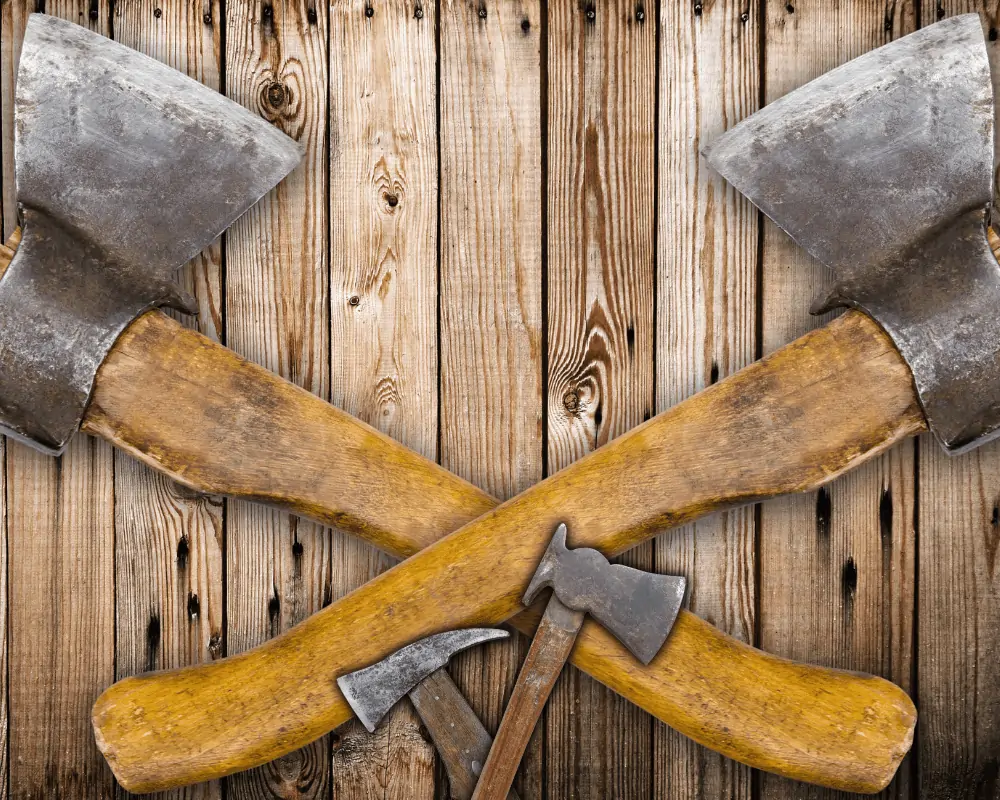
Later, into the 1900s, the poll was sometimes converted into a smoking pipe by carving a hole.
They were often gifts from settlers to local tribes as a sign of peace.
Lastly, you’ll be able to identify old tomahawks by the lack of lugs.
This area of extra contact surface wasn’t used with these axe heads. And earlier variations of the tomahawk used strips of rawhide to secure the head to the handle.
Viking Axe Head Identification
Viking axes, also known as a Dane axe, was a Viking weapon used during the middle ages.
You can tell a Viking axe head by the pointy and enunciated tips on both ends of the bit.
These blades weren’t for the faint of heart.

Most Viking axe heads were forged with a blade close to a foot long. They were incredibly lean, which gave the warrior more cutting potency.
Unlike most of the axe heads we covered, a Viking axe head is more triangular than the alternative bottom-flared blade.
But not every Viking axe head is the same.
Your best bet is to do some research if you aren’t sure.
Axe Head Identification Marks

Did you identify the type of axe head you have?
If not, don’t give up hope. As I said, there were hundreds of styles made not that long ago.
So keep looking!
But before you go, I have that cheat sheet I promised you.
If what you really need is to identify the marks on your axe head, whether out of curiosity or to date your axe, I’ll leave you with this list of axe makers’ marks.
After days of research and compiling reports involving axe maker chronology, detailed historical archives, and some personal experience, I put together this axe head identification guide for some of the more popular makers and their marks.
Whether you’re trying to identify a plumb axe head, kelly axe head, or something a little less known, this cheat sheet will set you on the right path.





